“The Future Ain’t What It Used to Be”:
Collaborative Leadership, Higher Education, and Climate Destabilization
By Peter W. Bardaglio, Ph.D., Senior Advisor, Second Nature
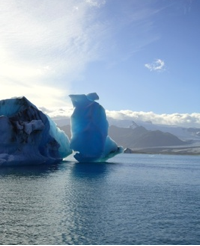
“The future ain’t what it used to be,” Yogi Berra once declared.[i] He wasn’t talking about climate change, but he could’ve been. Eight out of the nine hottest years on record worldwide, including last year, have occurred since 2000. The rate of the Arctic summer melt is accelerating at an astonishing pace and the latest reports now predict that we could have ice free summers in the Arctic as early as 2015. Scientists at the Mauna Loa Observatory in Hawaii announced this past May that for the first time in human history the level of carbon dioxide in the atmosphere passed 400 ppm. The last time carbon dioxide levels were this high was probably in the Pliocene epoch, over three million years ago. To top it off, a paper just published in Nature predicts that by mid-century over half the planet will be experiencing average temperatures equivalent to the hottest days recorded since 1860.[ii]
As bad as this news is, and it’s bad, there is some really good news on the clean energy front.
According to a recent flurry of studies, we have the ability with existing technology to get 80-100 percent of our power from wind, sun, water, tides, and other renewable sources, and prevent runaway climate change, far worse than what is already locked in, from taking place. A 2011 report from the United Nations’ Intergovernmental Panel on Climate Change, for example, concluded that already existing technologies could, in combination, make up almost 80 percent of our energy supply by 2050 and cut greenhouse gas emissions by a third from business-as-usual projections.[i] Earlier this year, Stanford and Cornell researchers issued a detailed analysis explaining how wind, water, and solar power could replace all fossil fuels in New York State in an economically viable way if the external health and environmental costs are taken into account.[ii] In both cases, the message is the same: the critical missing components are the policies necessary to drive change in this direction and the political will to implement them.
At another, deeper level, of course, climate destabilization is more than a physical problem to be solved by technology or a policy problem to be solved by politics. It is, in Malcolm Bull's words, "an ethical problem that necessarily requires moral solutions."[iii] The real question is not so much whether we have the technical ability or the political will to slow down the rate of global warming but whether we have the capacity to expand our moral imagination so that we can grasp the importance of doing so.
Transforming our exploitation of Earth into a relationship that is mutually beneficial must be at the core of this enlarged moral imagination. We need to move from what Otto Scharmer calls “egosystem awareness to ecosystem awareness.” In Scharmer’s words, “we have to open up, let go of the past, and tune in to what we feel is a field of future possibility, something that might be possible, something that we could bring into reality, a future that would be very different from the past.”[iv] Unless we act now to make this shift to “ecosystem awareness,” devoting ourselves to preserve and enhance the life, beauty, and diversity of the planet for future generations, we will become, as Thomas Berry writes, “impoverished in all that makes us human.”[v]
Few institutions are better positioned to provide the leadership required to avoid the potential collapse of human civilization than higher education. Indeed, it is hard to see where else the necessary leadership will come from if universities and colleges do not step up and take on this responsibility. Not just any kind of leadership will do the trick, however. This new leadership must be collaborative; it must adopt in its interactions with the larger society the same ethos of cooperation and mutuality that we need to manifest in our interactions with the biosphere. Traditional ideas about top down, hierarchical leadership, it should be obvious, will reinforce rather than dissolve the old commitment to dominion that we need to put behind us.
Deborah Frieze and Margaret Wheatley, in their study of citizenship in Columbus, Ohio, explore the dynamics of an innovative approach to leadership they term “leader-as-host.” Given the complex and interrelated nature of the problems facing us, we must abandon the old notion of “leader-as-hero” because, in their words, “no single individual can possibly know what to do.” Instead of issuing orders from the top, “leaders-as-host” build on a network of relationships to invite people from all parts of the system to participate and contribute to the process of developing solutions because they “know that hosting others is the only way to get large-scale, intractable problems solved.”[vi]
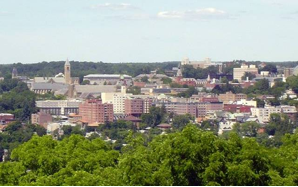 Universities and colleges in the United States have historically been crucibles of social change and laboratories for new ideas and creative solutions to some of society’s toughest problems. What is new is the scale of the problem and the threat it poses to human civilization. Simply providing models of sustainability on campus will not suffice. Universities and colleges can become truly sustainable only if they adopt the perspective of “ecosystem awareness” and work with the communities around them to become sustainable. They must commit not only to dramatically reducing the carbon footprint of the campus and become examples of ecological integrity, social justice, and economic health, but also to collaborating with the larger community in doing so, enabling solutions to be scaled up and replicated.
Universities and colleges in the United States have historically been crucibles of social change and laboratories for new ideas and creative solutions to some of society’s toughest problems. What is new is the scale of the problem and the threat it poses to human civilization. Simply providing models of sustainability on campus will not suffice. Universities and colleges can become truly sustainable only if they adopt the perspective of “ecosystem awareness” and work with the communities around them to become sustainable. They must commit not only to dramatically reducing the carbon footprint of the campus and become examples of ecological integrity, social justice, and economic health, but also to collaborating with the larger community in doing so, enabling solutions to be scaled up and replicated.
As Michael Young, president of the University of Washington, argues, higher education must go beyond greening the campus. “For colleges and universities—especially public ones—engaging with our communities is fundamental to our mission,” he contends. “We all have a responsibility to turn our universities inside out—that is, to take the wealth of ideas percolating on our campuses into our community, whether that community is across the street or across the globe.”[vii]
The Tompkins County Climate Protection Initiative (TCCPI), inspired in particular by similar efforts in Grand Rapids, Michigan and Oberlin, Ohio, seeks to demonstrate what this kind of collaboration looks like and the impact it can have on a region’s economic, social, and environmental health.[viii] With a population of about 100,000, Tompkins County includes three American College and University President Climate Commitment signatories (which also happen to be among the top employers in the county): Cornell University, Ithaca College, and Tompkins Cortland Community College. In addition, the city of Ithaca, the towns of Ithaca, Caroline and Danby, and the county have made formal commitments to reduce greenhouse gas emissions, with the county calling for a decrease in emissions of 80 percent by 2050 and establishing an interim goal of 20 percent by 2020.
TCCPI has leveraged these climate action commitments to help mobilize a countywide energy efficiency effort, expand the production of renewable energy, and accelerate the transition to a clean energy economy. The coalition, launched in June 2008, currently consists of local leaders from more than forty organizations, institutions, and businesses in the county organized into five sectors: business, education, local government, nonprofit, and youth. Each of these sectors has a representative serving on the steering committee, which tracks the progress of the coalition’s projects and sets the agenda for the monthly meetings of the whole group.
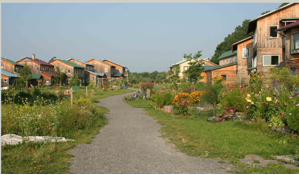 The most immediate way in which TCCPI has attempted to be a “leader-as-host” is to provide an ongoing forum where local leaders can come together regularly, share their progress and challenges, and brainstorm collectively about ideas and solutions. In some cases, it is hard to imagine how the outcomes resulting from these meetings would have emerged without the years of building trust and thinking collaboratively. For example, the Tompkins County Planning Department and EcoVillage at Ithaca (EVI) had never worked together in the nearly two decades since EVI was founded. Yet, at a TCCPI meeting in June 2010, the group came up with the notion of the planning department and EVI joining hands to submit a proposal to the EPA Climate Showcase Community Grant Program, which seeks to highlight community efforts to decrease greenhouse gas emissions. The grant proposal, submitted the next month, outlined a strategy for disseminating to the larger community the important lessons learned at EVI about shrinking one’s carbon footprint and developing ways that the county could incorporate these key principles into its planning for future development. EPA awarded a $375,000 grant and work began in February 2011. Two model developments, one at EVI and a pocket neighborhood downtown, are already underway and the county has proposed a third development near the regional medical center. All of them are designed to highlight innovative approaches to “creating dense neighborhoods that enhance residents’ quality of life while using fewer resources.”[ix]
The most immediate way in which TCCPI has attempted to be a “leader-as-host” is to provide an ongoing forum where local leaders can come together regularly, share their progress and challenges, and brainstorm collectively about ideas and solutions. In some cases, it is hard to imagine how the outcomes resulting from these meetings would have emerged without the years of building trust and thinking collaboratively. For example, the Tompkins County Planning Department and EcoVillage at Ithaca (EVI) had never worked together in the nearly two decades since EVI was founded. Yet, at a TCCPI meeting in June 2010, the group came up with the notion of the planning department and EVI joining hands to submit a proposal to the EPA Climate Showcase Community Grant Program, which seeks to highlight community efforts to decrease greenhouse gas emissions. The grant proposal, submitted the next month, outlined a strategy for disseminating to the larger community the important lessons learned at EVI about shrinking one’s carbon footprint and developing ways that the county could incorporate these key principles into its planning for future development. EPA awarded a $375,000 grant and work began in February 2011. Two model developments, one at EVI and a pocket neighborhood downtown, are already underway and the county has proposed a third development near the regional medical center. All of them are designed to highlight innovative approaches to “creating dense neighborhoods that enhance residents’ quality of life while using fewer resources.”[ix]
Another project growing out of TCCPI discussions is the installation of photovoltaic arrays at numerous sites in the county, including several county government buildings, businesses, and higher education institutions. In the area of energy efficiency, TCCPI has worked with the Cornell Cooperative Extension of Tompkins County (CCETC) to support the establishment of the Tompkins County Energy Corps, which is made up of students from Cornell and Ithaca College who carry out informational energy audits for homeowners, share information with them about state and federal incentives, and encourage concrete steps to improve the energy performance of their residences. TCCPI has also worked closely with CCETC in rolling out a countywide campaign, “Get Your Greenback Tompkins,” to raise awareness about the importance of energy savings.
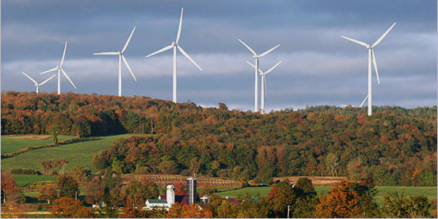
In these latter two instances, TCCPI shared its own financial resources to help launch the projects. In other cases, it has lent its social capital to help projects obtain the necessary financial capital. Two original members of the TCCPI steering committee serve on the founding board of Black Oak Wind Farm, an 11.9 megawatt project just outside Ithaca slated to be in production by the summer of 2014.
The first community wind project in the region, Black Oak raised its seed capital of $1.2 million from over eighty local investors. The TCCPI network provided a crucial resource in reaching out to many of these people and persuading them to invest in the wind farm and purchase power from it.
TCCPI’s latest initiative marks perhaps its most important effort yet to be a “leader-as-host.” The coalition is currently working with downtown Ithaca property owners to form a 2030 District, apublic/private partnership in which property owners and managers come together with local government, business, and community leaders to provide a model for urban sustainability through collaboration, leveraged financing, and shared resources. Across the country, 2030 Districts are being established to meet the energy, water and vehicle emissions targets called for by Architecture 2030 in the 2030  Challenge for Planning. Currently, all of the existing 2030 Districts are in major cities such as Seattle, Los Angeles, Cleveland, and Pittsburgh. Ithaca’s 2030 District will become one of the first in a smaller urban community, and it will focus new attention on the power of campus-community collaboration to reduce greenhouse gas emissions in college towns throughout the US TCCPI has assumed the responsibility of lead facilitator and will manage the overall process of developing and operating the Ithaca 2030 District.
Challenge for Planning. Currently, all of the existing 2030 Districts are in major cities such as Seattle, Los Angeles, Cleveland, and Pittsburgh. Ithaca’s 2030 District will become one of the first in a smaller urban community, and it will focus new attention on the power of campus-community collaboration to reduce greenhouse gas emissions in college towns throughout the US TCCPI has assumed the responsibility of lead facilitator and will manage the overall process of developing and operating the Ithaca 2030 District.
The bottom line? TCCPI embodies the next logical stage in the higher education sustainability movement. It not only promotes collaboration among the local higher education institutions but also encourages engagement with the community at large in a democratic process. It seeks to draw together key stakeholders and engage them in a course of action that begins with discovering and making explicit common intention and ends with collectively creating the kinds of innovation needed to effectively address intractable problems. With its emphasis on campuses and communities partnering to address climate and energy issues, TCCPI— like the Oberlin and Grand Rapids models it was based on—provides a framework for multisector collaboration that holds out hope of a brighter future for all. It demonstrates that job creation, energy security, more resilient communities, and responsible stewardship of the environment are not mutually exclusive.
Such efforts are not just taking place in the United States. The good news is that higher education institutions across the world, according to a recent United Nations report, “are reaching out past campus boundaries to form ambitious partnerships with industry, government and civil society organisations.” Universities in Scotland, England, Switzerland, Canada, and Japan, among others, are collaborating “with diverse social actors to trigger and then drive the sustainable transformation of a specific region, city or community.”[x]
In each of these situations, universities are taking on the role of “anchor institutions,” nonprofit, place-based institutions that act as economic and social drivers in their larger communities. As manufacturing declines in many U.S. communities, the service sector expands, and government faces mounting fiscal problems, anchor institutions have the potential to become increasingly important actors in building a more sustainable future. Nancy Cantor, the former chancellor and president of Syracuse University, points out, however, that universities can be effective anchor institutions in their larger communities only “if we can create a two-way street between us.” “This work of crossing boundaries to engage and dialogue with many different partners in addressing the critical issues of our day,” she observes, “is a kind of 21st Century barn-raising.”[xi]
To expand beyond the green campus, in short, requires that we intentionally and strategically create what Gibrán Rivera refers to as “the spaces for connection.” Collaboration, inclusivity, and mutual respect will make it possible for us to move upstream, where the real solutions are. In Rivera’s words, “By re-inventing the ways in which we come together we begin to live in the world we are trying to build.”[xii]
Cantor’s notion of a “21st Century barn-raising” is especially appropriate because it highlights the web of reciprocity that we need to create going forward. Just as the collective action of a community results in building or rebuilding a barn—a structure that in all likelihood is beyond the means of the family in question yet strengthens the capacity of both that family and community to better meet the future—so, too, must we find ways of sharing resources, expertise, and skills that leave no one behind and make our communities more resilient and able to thrive in a world that will bring unprecedented challenges.
By definition, collaborative climate action at the community level is complex, dynamic, and contingent. It requires a multisector coalition working to produce a collective impact rather than working for change through a single organization. As John Kania and Mark Kramer explain, “collective impact is not merely a new process that supports the same social sector solutions but an entirely different model of social progress.” The power of collective impact lies in bringing multiple pairs of eyes to a problem and then creating the space for coalition members to decide what to do. It is not about imposing a single predetermined solution or template on the community but rather embracing “a new way of seeing, learning, and doing that marries emergent solutions with intentional outcomes,” one that accepts the “continual unfolding of newly identified opportunities for greater impact.”[xiii]
There is no silver bullet, no magic wand, which can make the immense problems confronting us go away. A necessary if not sufficient condition, though, is that we move from the old myths of independence and self-reliance and acknowledge the truths of interdependence and mutuality. In an increasingly secular world, universities and colleges are among the few institutions that have the capacity to promote this broader, long-term understanding of where the human experiment must head.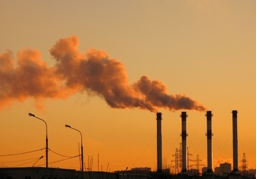
There is, however, a significant obstacle to the ability of higher education in this country to provide this kind of moral leadership: its continued investment in fossil fuel companies. There are few practices that more clearly reveal the persistence of “egosystem awareness” in higher education. Thanks to the efforts of Bill McKibben's "Do the Math Tour," the Responsible Endowments Coalition, and others, however, the push for divestment and redirection of those investments into socially responsible and environmentally sustainable businesses, including those in the local community, is gaining traction throughout the country.
Trustees who oversee American college and university endowments investments totaling about $400 billion in the need to be held accountable for the damage their oil, gas, and coal investments are inflicting on the rest of society.[xiv] How can any higher education institution consider itself sustainable when it has committed millions of dollars to the very activities that its own scientists have found to be the leading contributors to climate destabilization? The insistence on the part of university and college administrators that they cannot divest because they have an overriding obligation to maximize endowment returns rings especially hollow in light of increasing evidence that similar if not greater returns can be achieved from socially responsible investments.[xv]
Already six higher education institutions, including Hampshire College, Unity College, College of the Atlantic, Sterling College, Green Mountain College, and San Francisco State College, have decided to pull their investments out from fossil fuel companies. Students at Middlebury College, Harvard University, Cornell University, Swarthmore College, the University of Colorado, and over 300 other institutions are mounting significant efforts to get their institutions to do so as well.[xvi]
If colleges and universities want to become leaders on the issues of sustainability and climate protection, how can they do so effectively without helping to forge a more sensible energy infrastructure, one that will help us avoid climate catastrophe? How can higher education call for such an undertaking if it doesn’t put its money where its mouth is? In other words, until colleges and universities demonstrate that they are willing to redirect their own considerable financial resources to investments in an alternative clean energy regime, their credibility in calling for new energy solutions will be open to attack.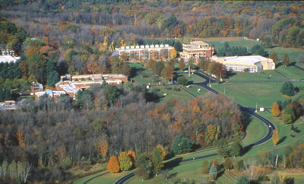
There are two main sources of hope. First, it will be the students, not sustainability officers, presidents, or trustees, who drive the real change. It's their future and they know how profoundly at risk it is. They are becoming increasingly aware of how deeply the colleges and universities they attend are involved in supporting the fossil fuel regime, and they are organizing to do something about it. "Our complicity in sources of violence and environmental destruction has on-the-ground implications every day," Middlebury students asserted last November. "Heavy investment in the fossil fuel giants of our world has implications for climate change, human health, and the environment that reach far beyond Middlebury."[xvii] These students are part of the largest social movement in all human history: grassroots organizations and individuals dedicated to restoring the environment and fostering social justice, what Paul Hawken calls “the blessed unrest.”[xviii] They will be the major force moving higher education institutions from “egosystem awareness” to “ecosystem awareness.”
Another source of hope, oddly enough, is the transformative power of the market. Regardless of which political party is in power, it will only be a matter of time before solar reaches grid parity, the point at which electricity generated by solar is as cheap as or cheaper than electricity generated by fossil fuel or nuclear power. In fact, General Electric—yes, that's right, General Electric—claims that due to falling solar panel prices and increasing efficiency this point could be reached in the U.S. in as little as five years. And that's without any subsidies whatsoever. Overall, according to a World Energy Council report released earlier this month, renewables will make up 34 percent of all installed capacity worldwide by 2030.[xix] In short, we are on the verge of a revolution in renewable energy production.
Wouldn't it make more sense for the long-term credibility, integrity, and relevance of colleges and universities to get on the right side of history and exercise their influence to help accelerate the transition to a clean energy economy and stave off runaway climate change? We all know the next five to ten years are critical, and the faster we move towards a more efficient, greener energy regime, the better off we all will be. Why shouldn't higher education make achieving this new order its top priority? If not, the complicity of colleges and universities in the onset of a catastrophic climate regime will be to their everlasting shame, at the very least equaling the long shadow cast by their involvement in American slavery.[xx]
Notes
[i]Yogi Berra, The Yogi Book: I Really Didn’t Say Everything I Said (New York: Workman Publishing, 1989), pp. 118-19.
[ii]Tia Ghose, “NASA: 2012 Was 9th Hottest Year on Record Worldwide,” Live Science, January 15, 2013. http://www.livescience.com/26277-nasa-2012-ninth-hottest-year.html.; Nafeez Ahmed, “White House Warned on Imminent Arctic Ice Death Spiral,” The Guardian, May 2, 2013. http://www.guardian.co.uk/environment/earth-insight/2013/may/02/white-house-arctic-ice-death-spiral; John Vidal, “Global Carbon Dioxide Levels Set to Pass 400 ppm Milestone,” The Guardian, April 29, 2013. http://www.guardiannews.com/environment/2013/apr/29/global-carbon-dioxide-levels; Andrew Simms, “Why Did the 400 ppm Carbon Milestone Cause Barely a Ripple?” The Guardian, May 30, 2013. http://www.guardian.co.uk/environment/blog/2013/may/30/carbon-milestone-newspapers; Justin Gillis, “By 2047, Coldest Years May Be Warmer Than Hottest in Past, Scientists Say,” New York Times, October 9, 2013. http://www.nytimes.com/2013/10/10/science/earth/by-2047-coldest-years-will-be-warmer-than-hottest-in-past.html.
[i]IPCC, Special Report on Renewable Energy Sources and Climate Change Mitigation. Prepared by Working Group III of the Intergovernmental Panel on Climate Change (Cambridge, UK and New York: Cambridge University Press, 2011).http://srren.ipcc-wg3.de/report.
[ii]Mark Z. Jacobson, et al., “Examining the Feasibility of Converting New York State’s All-Purpose Energy Infrastructure to One Using Wind, Water, and Sunlight,” Energy Policy (2013).http://www.stanford.edu/group/efmh/jacobson/Articles/I/NewYorkWWSEnPolicy.pdf. See also Mark Z. Jacobson and Mark A. Delucchi, "A Path to Sustainable Energy by 2030," Scientific American, 301 (November 2009): 38-65. http://www.stanford.edu/group/efmh/jacobson/Articles/I/sad1109Jaco5p.indd.pdf; Adam White and Jason Anderson, “Re-energising Europe: Putting the EU on Track for 100% Renewable Energy.” 2013 World Wildlife Fund Report. http://awsassets.panda.org/downloads/res_report_final_1.pdf.
[iii]Malcolm Bull, “What is the Rational Response?” London Review of Books, vol. 34, no. 10 (May 24, 2012), pp. 3-6. http://www.lrb.co.uk/v34/n10/malcolm-bull/what-is-the-rational-response.
[iv]C. Otto Scharmer, “The Blind Spot of Institutional Leadership: How to Create Deep Innovation through Moving from Egosystem to Ecosystem Awareness,” delivered at the World Economic Forum, September 2010, Tinjan, China. http://www.ottoscharmer.com/docs/articles/2011_BMZ_Forum_Scharmer.pdf.
[v] Thomas Berry, The Great Work: Our Way into the Future (New York: Bell Tower Books, 2007), pp. 201, 200.
[vi]Deborah Frieze and Margaret Wheatley, “From Hero to Host: A Story of Citizenship in Columbus, Ohio.” The Berkana Institute. http://www.walkoutwalkon.net/wp-content/uploads/2011/04/WheatleyFrieze_HeroToHost.pdf.
[vii]Michael K. Young, “Turning the University Inside Out,” Huffington Post, March 7, 2013. http://www.huffingtonpost.com/michael-k-young/green-colleges-_b_2830622.html.
[viii]For more on the Grand Rapids initiative, see Peter Bardaglio and Andrea Putman, Boldly Sustainable: Hope and Opportunity for Higher Education in the Age of Climate Change (Washington, DC: National Association of College and University Business Officers, 2009), pp. 110-13. David Orr outlines the vision of the Oberlin Project and its progress to date in “What Do We Stand for Now?” Oberlin Alumni Magazine (Fall 2011): 19-28. http://oberlin.edu/alummag/fall2011/features/project.html.
[ix]For additional details about the EPA climate showcase grant and progress so far, see http://www.epa.gov/statelocalclimate/local/showcase/tompkins.html and http://community-that-works.org.
[x]Gregory Trencher and Masaru Yarime, “Universities Co-Creating Urban Sustainability,” OurWorld 2.0, May 23, 2012. http://ourworld.unu.edu/en/universities-co-creating-urban-sustainability.
[xi]Nancy Cantor, “Universities as Anchor Institutions: Building Coalitions and Collective Experience,” invited lecture delivered at the University of Nevada-Las Vegas School of Architecture, September 25, 2012.
[xii]Gibran Rivera, “How Do We Really Make Change Happen?” Journal of Sustainability Education (May 6, 2011). http://www.jsedimensions.org/wordpress/content/how-do-we-really-make-change-happen_2011_05.
[xiii]John Kania and Mark Kramer, “Embracing Emergence: How Collective Impact Addresses Complexity,” Stanford Social Innovation Review (January 21, 2013). http://www.ssireview.org/blog/entry/embracing_emergence_how_collective_impact_addresses_complexity.
[xiv]“Active Ownership Initiative,” Responsible Endowments Coalition. http://www.endowmentethics.org/active-ownership-initiative.
[xv]Joshua Humphreys, “Institutional Pathways to Fossil-Free Investing: Endowment Management in a Warming World,” Tellus Institute, May 2013. http://gofossilfree.org/files/2013/05/Institutional-Pathways-to-Fossil-Free-Investing.pdf
[xvi]“Commitments,” GoFossilFree.org. http://gofossilfree.org/commitments; Kevin Begos and Joann LoViglio, “College Fossil-Fuel Divestment Movement Builds,” Boston.com, May 22, 2013. http://www.boston.com/2013/05/22/dbb-daf-eca-entry-cont/D9gsUCKh6xSjiZXCgxmMdO/singlepage.html.
[xvii]Molly Stuart et al., “November 1st Community Judicial Board Hearing – DLWC Statement,” The Dalai Lama Welcoming Committee. http://middleburydlwc.wordpress.com/2012/11/02/november-1st-community-judicial-board-hearing-dlwc-opemomg-statement.
[xviii]Paul Hawken, Blessed Unrest: How the Largest Social Movement in History Is Restoring Grace, Justice, and Beauty to the World. New York: Viking, 2007.
[xix]Osha Gray Davidson, “GE: Solar Power Will Cost Less Than Fossil Fuels and Nuclear Power in Five Years,” Forbes, May 26, 2011. http://www.forbes.com/sites/oshadavidson/2011/05/26/ge-solar-power-will-cost-less-than-fossil-fuels-and-nuclear-power-in-five-years; Silvio Marcacci, “Grid Parity, Low LCOE Driving 34% Global Renewables Capacity by 2030,” CleanTechnica, October 18, 2013.
For arecent analysis of global grid parity for solar, see Perry Sioshansi, “Deutsche Bank Says Solar is Approaching Grid Parity,”Breaking Energy, September 5, 2013.
http://breakingenergy.com/2013/09/05/deutsche-bank-says-solar-is-approaching-grid-parity.

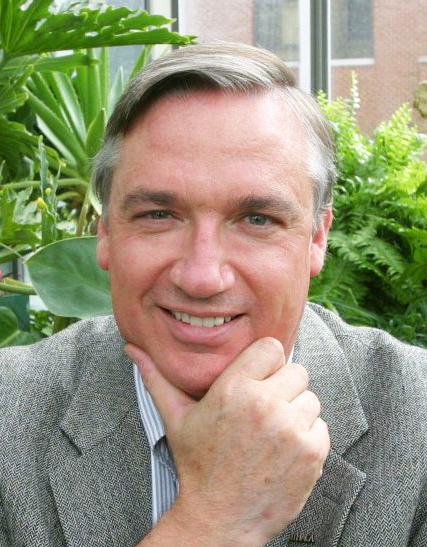
Add new comment